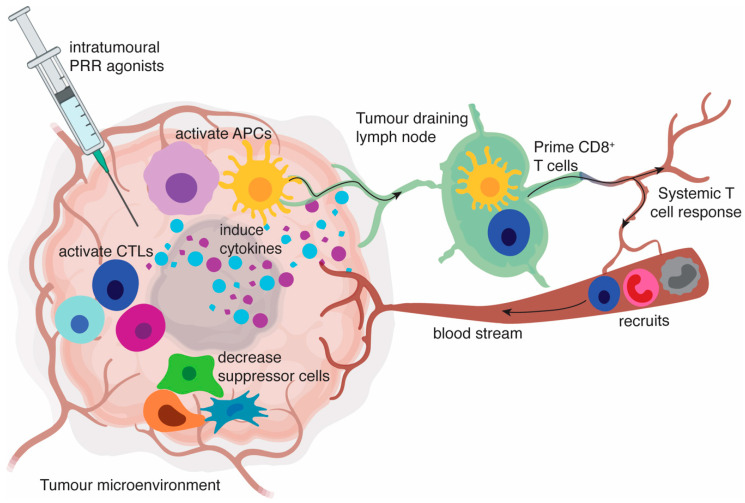Figure 1.
Intratumoural pattern recognition receptors (PRR) agonists induce a proinflammatory tumour microenvironment. PRR engagement on antigen-presenting cells (APCs) results in the activation of APCs including conventional myeloid dendritic cells (cDCs), plasmacytoid dendritic cells (pDCs) and macrophages. These activated APCs produce cytokine profiles mostly dominated by type I interferons (IFN) as well as proinflammatory cytokines, such as IL-12p70, IL-6, IL-1 and tumour necrosis factor (TNF). This creates an environment that favours the activation or restimulation of T cells, decreases the activity of myeloid-derived suppressor cells (MDSCs) and regulatory T cells (Tregs), and polarises macrophages to an anti-tumoural M1-type phenotype. Activated APCs also appear in tumour-draining lymph nodes, where they can contribute to presentation of tumour-associated antigens to T cells. Chemokines released in the tumour help recruit circulating T cells, natural killer (NK) cells, monocytes, and neutrophils. Ultimately, a systemic immune response is generated that can be capable of inducing regression at distant tumours.

